Table of Contents
Are you tired of those sticky and stubborn resistance bands putting a damper on your workout flow?
Well, get ready to level up your exercise game with some smooth moves! In this post, we’ll discover how to lubricate resistance bands to make your workouts feel like a breeze.
Say goodbye to the frustrating tugs, snags, and interruptions, and say hello to effortless and fluid movements. We’ll unravel the secrets to keeping your bands in prime condition, ensuring they glide with grace and provide the perfect resistance every time.
So, buckle up and get ready to discover the art of lubricating resistance bands and unleash your full potential in the gym. Let’s make those resistance bands your new fitness BFFs!
Understanding Resistance Bands

Types of Resistance Bands
Resistance bands come in different shapes and sizes, so let’s explore the various types you’re likely to encounter during your fitness journey.
– Loop Bands
These are circular bands that form a loop when not stretched. Loop bands are great for lower body exercises, such as squats, lunges, and glute bridges. They provide resistance both when stretched and released, making them perfect for targeting specific muscle groups.
– Tube Bands
Tube bands consist of a hollow, rubber-like tube with handles on each end. The handles provide a comfortable grip, and the length of the tube allows for a wide range of exercises. Tube bands often come with different levels of resistance, indicated by color-coded bands, so you can easily adjust the intensity of your workout.
– Figure-Eight Bands
As the name suggests, figure-eight bands have a shape resembling the number eight. These bands typically have handles on both ends and are excellent for upper-body exercises like chest presses, rows, and shoulder exercises. They provide resistance through the entire range of motion, helping you build strength and muscle definition.
Material Composition and Construction of Resistance Bands
Now that you know the types, let’s take a closer look at what makes up these awesome resistance bands.
– Latex
Many resistance bands are made from latex, which is a natural rubber material. Latex bands offer excellent elasticity and durability, making them a popular choice for both beginners and advanced users. However, if you have latex allergies, don’t worry! There are latex-free alternatives available, typically made from synthetic materials like thermoplastic elastomer (TPE) or fabric.
– Fabric
Fabric resistance bands are gaining popularity due to their comfortable feel and non-slip properties. These bands are usually made of a blend of cotton, polyester, or similar fabric material. The fabric covering provides a softer touch against your skin, making them suitable for individuals with sensitive skin.
– Construction
Resistance bands are typically constructed with layers of material to enhance their strength and resistance. Some bands have a continuous loop design, while others, like tube bands, consist of single or multiple tubes with handles. The construction influences the band’s flexibility, durability, and overall performance, so it’s essential to choose bands that suit your specific needs.
Why Lubrication is Necessary
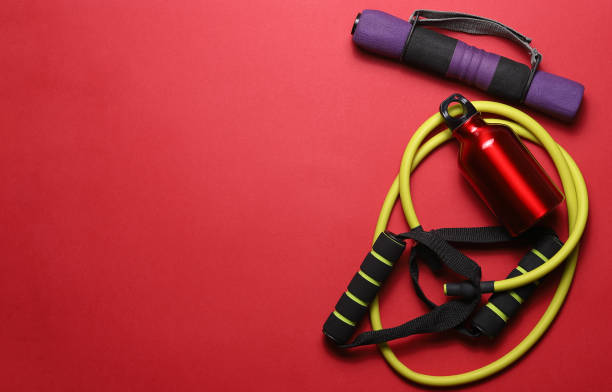
The Role of Lubrication in Maintaining Resistance Bands
Just like you need some oil in your gears for smooth movement, your resistance bands also need a little TLC to keep them in prime condition.
– Reducing Friction
Lubrication plays a crucial role in reducing friction between the resistance band and other surfaces it meets. When you perform exercises using resistance bands, the constant stretching and contracting can create friction, causing the band to wear out faster. By lubricating your bands, you create a protective barrier that reduces friction and minimizes wear and tear.
– Preventing Sticking and Snapping
Ever experienced that frustrating moment when your resistance band feels sticky or starts to snap during a workout? Lubrication can come to the rescue! Applying a suitable lubricant helps prevent bands from sticking together, especially in humid environments. It also keeps the bands pliable, preventing them from becoming brittle and prone to snapping.
Benefits of Regular Lubrication
Now that you know why lubrication is important, let’s have a look at the exciting benefits of regularly greasing up those resistance bands!
– Enhanced Performance
By lubricating your resistance bands, you can optimize their performance. The smooth gliding motion allows for more fluid movements during exercises, helping you maintain proper form and technique. This, in turn, maximizes the effectiveness of your workouts and helps you achieve better results.
– Increased Durability
Lubrication acts as a protective shield for your resistance bands, extending their lifespan. By reducing friction and minimizing wear, you can prevent premature breakdown of the bands. This means your investment in resistance bands will go a long way, providing you with reliable and long-lasting fitness tools.
– Improved Safety
Lubrication not only benefits the bands themselves but also contributes to your safety during workouts. When resistance bands are well-lubricated, they are less likely to snap or cause sudden jerky movements. This reduces the risk of injuries and ensures a safer exercise experience for you.
– Enhanced Comfort
Imagine smoothly gliding through your resistance band workouts with ease and comfort. Regular lubrication helps create a friction-free environment, allowing the bands to move effortlessly against your skin or clothing. Say goodbye to uncomfortable pulling or pinching sensations and hello to a more enjoyable workout!
Selecting the Right Lubricant
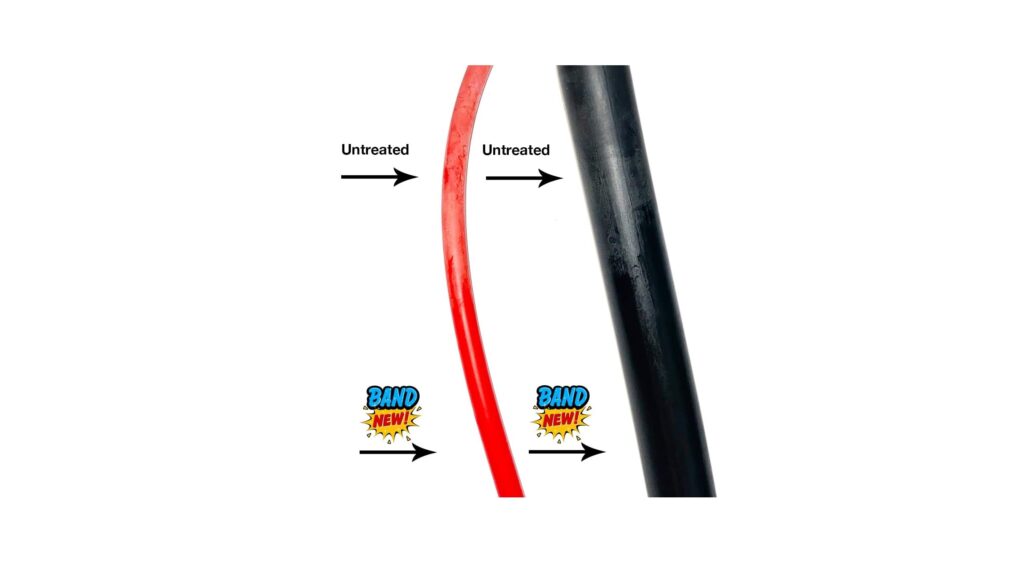
Considerations when Choosing a Lubricant for Resistance Bands
It’s time to choose the perfect lubricant to keep your resistance bands slick and smooth. But wait, we can’t just grab any random substance lying around and slather it on.
Let’s go through some essential considerations when selecting the ideal lubricant for your resistance bands.
– Non-Greasy and Non-Staining Properties
Nobody wants their hands or workout gear to be covered in greasy residue or unsightly stains. Look for a lubricant that boasts non-greasy and non-staining properties. This way, you can focus on your workouts without worrying about leaving a mess behind.
– Compatibility with Various Resistance Band Materials
Resistance bands come in different materials like latex, rubber, fabric, or synthetic blends. It’s important to choose a lubricant that is compatible with the specific material of your brand. Some lubricants may degrade certain materials or cause them to deteriorate faster. Always check the compatibility to ensure the longevity of your bands.
– Long-Lasting and Water-Resistant Formula
You want a lubricant that stands the test of time and repels water, sweat, and moisture. Opt for a lubricant with a long-lasting formula that won’t wear off easily, even during intense workouts. Water resistance is especially crucial if you plan to use your bands in humid environments or during sweaty sessions.
Recommended Lubricants for Resistance Bands
If you’re seeking a quick recommendation without delving into details, the High-Performance Silicone Lubricant could be an excellent lubricant option. Feel free to check it out now.
Now that you know what to look for let me introduce you to some recommended lubricants that check all the right boxes.
– Silicone-Based Lubricants
Silicone-based lubricants are a popular choice for resistance bands due to their excellent lubricating properties. They are non-greasy, long-lasting, and water-resistant, making them ideal for smooth and hassle-free workouts. Just a small amount goes a long way, ensuring your bands stay slick and ready for action.
– Talcum Powder or Baby Powder
Believe it or not, good old talcum powder or baby powder can work wonders as a lubricant for resistance bands. It helps reduce friction, prevents sticking, and absorbs excess moisture. Simply sprinkle a small amount on the bands, rub it in, and enjoy the silky-smooth sensation during your exercises.
– Rubbing Alcohol or Isopropyl Alcohol
If you prefer a quick-drying and residue-free option, rubbing alcohol or isopropyl alcohol can do the trick. Dilute it with some water, spray it onto a cloth, and wipe down your bands. This helps remove any dirt or debris and leaves the bands clean and ready for use. Just be sure to allow the alcohol to evaporate completely before using the bands to avoid any skin irritation.
How to Lubricate Resistance Bands?

We want those bands to glide like silk, so let’s follow these step-by-step instructions for lubricating different types of bands.
Step-by-Step Instructions for Lubricating Loop Bands
– Clean the Band with Mild Soap and Water
Start by giving your loop band a good cleaning. Use a mild soap and water solution to remove any dirt, sweat, or debris that may have accumulated on the surface. Gently scrub the band with a soft cloth or sponge and rinse it thoroughly.
– Dry the Band Thoroughly
Once the band is clean, make sure to dry it completely before applying any lubricant. Moisture can interfere with the lubricant’s effectiveness, so give it some time to air dry or use a clean towel to pat it dry.
– Apply a Small Amount of Lubricant
Grab your chosen lubricant, whether it’s a silicone-based lubricant or talcum powder, and apply a small amount to your fingertips.
– Spread the Lubricant Evenly Across the Band’s Surface
Rub your fingertips along the length of the band, spreading the lubricant evenly. Ensure that all areas of the band, including the inside and outside surfaces, receive a light coating of lubricant. This will help minimize friction and allow for smooth movements.
– Allow the Lubricant to Dry Before Using the Band
Give the lubricant some time to dry and settle on the band. This will prevent any stickiness or residue that could affect your grip or cause discomfort during your workout. Once it’s dry, you’re ready to rock your exercises with a beautifully lubricated loop band!
Step-by-Step Instructions for Lubricating Tube Bands
– Detach the Handles from the Band
If you have a tube band with handles, start by detaching the handles from the band. This will allow you to lubricate the inner surface of the tube more effectively.
– Clean the Band and Handles Separately
Just like with the loop band, it’s essential to clean the tube band and handles with mild soap and water. Give them a good scrub to remove any dirt or sweat that may have accumulated.
– Apply Lubricant to the Inner Surface of the Tube
Now, focus on the tube itself. Apply a small amount of lubricant to the inner surface of the tube band. You can use your fingertips or cloth to spread the lubricant along the inside, ensuring even coverage.
– Reattach the Handles and Spread the Lubricant Evenly
Once the inner surface is lubricated, reattach the handles to the band. Then, rub the handles and outer surface of the tube to spread the lubricant evenly. Make sure all areas are coated, allowing for smooth and effortless movements.
– Wipe Off Any Excess Lubricant
After applying the lubricant, take a clean cloth and gently wipe off any excess. This will prevent any slippery residues from transferring to your hands or clothing during your workout.
Additional Tips for Lubricating Figure-Eight Bands
For figure-eight bands, the lubrication process is similar to loop bands. Follow steps 1-4 from the loop band instructions to clean and apply lubricant to the band’s surface. Ensure all areas of the band, including the figure-eight shape, receive a light coating. Let the lubricant dry before using the band.
Maintenance and Care
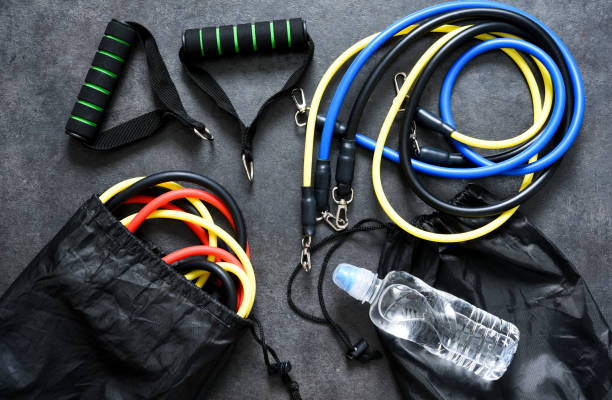
Let’s make sure these bands stay in tip-top shape for your workouts!
Cleaning Resistance Bands after Each Use
After an intense sweat session, it’s important to give your resistance bands a little TLC. Follow these steps to keep them clean and ready for your next workout:
– Wipe Down with a Damp Cloth
Grab a damp cloth or sponge and gently wipe down the entire length of the bands. This will help remove any sweat, dirt, or oils that may have accumulated during your exercise routine.
– Use Mild Soap and Water for Stubborn Stains
If your bands have stubborn stains or grime, mix a small amount of mild soap with water. Dip a cloth into the soapy solution and gently scrub the affected areas. Rinse the bands thoroughly to remove any soap residue.
– Air Dry Completely
Once clean, allow your bands to air dry completely before storing them. This helps prevent moisture build-up, which can lead to mold or mildew. Ensure they are completely dry to maintain their elasticity and prevent any unpleasant odors.
Storing Resistance Bands Properly to Prevent Damage
Proper storage is key to prolonging the lifespan of your resistance bands. Follow these tips to prevent damage and maintain their effectiveness:
– Keep Them in a Dry and Cool Place
Moisture and extreme temperatures can affect the integrity of your bands. Store them in a dry and cool area, away from direct sunlight or heat sources. Avoid humid environments, as moisture can degrade the materials over time.
– Coil or Fold Them Neatly
To prevent tangling and unnecessary stress on the bands, coil or fold them neatly after use. This helps maintain their shape and prevents them from getting tangled with other equipment.
– Use a Dedicated Storage Container or Bag
Consider investing in a storage container or bag specifically designed for resistance bands. This helps keep them organized and protects them from dust, dirt, and potential damage. Plus, it makes it easier to locate the right band for your workout!
Regular Inspection for Wear and Tear
Regularly inspecting your resistance bands is crucial for identifying any signs of wear and tear. Here’s what to look out for:
– Check for Fraying or Snapping
Examine the bands for any frayed or snapped areas, especially around the handles or seams. If you notice any significant damage, it’s time to replace the band to ensure your safety during workouts.
– Assess the Elasticity
Stretch the bands slightly to assess their elasticity. If you notice a significant loss of elasticity or if they no longer provide the desired resistance, it may be time for a new set of bands.
– Pay Attention to Discoloration or Deterioration
Keep an eye out for discoloration, brittleness, or any other signs of deterioration. This can indicate that the bands have reached the end of their lifespan and should be replaced.
By regularly cleaning, storing properly, and inspecting your resistance bands, you’ll ensure they stay in great condition and provide you with many effective workouts to come.
Troubleshooting
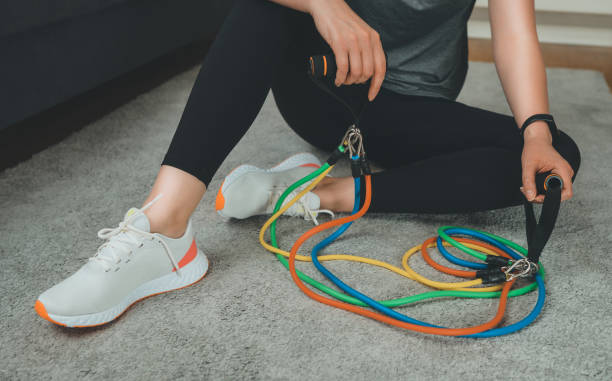
Sometimes even the most loyal resistance bands can give us a little trouble. But fear not, because I’m here to help you troubleshoot those common issues and get your bands back in tip-top shape. Let’s dive in!
Common Issues with Resistance Bands and Their Potential Causes
– Loss of Elasticity
If you notice that your resistance bands have lost their elasticity and don’t provide the same level of resistance as before, it could be due to prolonged use, exposure to extreme temperatures, or improper storage. Over time, the materials may degrade, causing a loss of elasticity.
– Snapping or Breaking
The last thing you want during a workout is a resistance band snapping or breaking. This can be caused by overstretching the bands beyond their capacity, using them on rough or abrasive surfaces, or using bands that are worn out or past their expiration date.
– Stiffness or Stickiness
Resistance bands may become stiff or sticky over time, making it challenging to perform exercises smoothly. This can be caused by the accumulation of dirt, sweat, or residue from lubricants or cleaning products.
Solutions for Addressing Resistance Band Stiffness or Stickiness
– Clean the Bands Thoroughly
If your bands feel stiff or sticky, it’s time for a deep clean. Start by washing them with mild soap and water, as mentioned in the previous section. Use a soft brush or cloth to scrub away any stubborn residue. Rinse thoroughly and allow them to air dry completely.
– Apply Lubricant
Once the bands are clean and dry, apply a small amount of lubricant, such as silicone-based lubricant or talcum powder. This will help reduce friction and restore the smoothness of the bands. Make sure to spread the lubricant evenly across the entire surface of the bands.
– Avoid Harsh Chemicals
When cleaning your bands, avoid using harsh chemicals or solvents that could damage the materials. Stick to mild soap and water or specialized fitness equipment cleaners to maintain the integrity of the bands.
– Store Properly
Improper storage can contribute to stiffness or stickiness. Ensure that you store your resistance bands in a cool and dry place, away from direct sunlight or heat sources. This will help prevent the buildup of moisture or the degradation of the materials.
– Rotate and Replace
Over time, resistance bands will naturally wear out, especially with frequent use. Consider rotating between multiple sets of bands to distribute the workload and extend their lifespan. If you notice significant wear, fraying, or loss of elasticity despite your efforts to revive them, it’s time to invest in a new set of bands for optimal performance and safety.
The Bottom Line
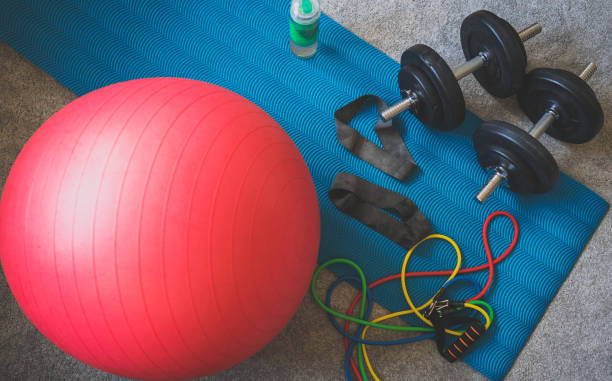
Now that you know the ins and outs of keeping your bands gliding like butter, get ready to take your workouts to the next level. Feel the freedom of fluid movements and the satisfaction of seamless resistance.
So go ahead, clean those bands, apply that lubricant, and get ready to slay those workouts with finesse. Say goodbye to resistance band woes and hello to a whole new level of fitness fun.
Remember, the key is to keep those bands in tip-top shape, so make sure to regularly maintain and inspect them. With a little TLC, your resistance bands will be your trusty sidekicks on your fitness journey.
Keep shining bright and keep those smooth moves going strong!








BARIATRIC GELATIN TRICK RECIPE
Your comment is awaiting moderation.
BARIATRIC GELATIN TRICK
Your comment is awaiting moderation.
BARIATRIC GELATIN TRICK
Your comment is awaiting moderation.
BARIATRIC GELATIN TRICK RECIPE
Your comment is awaiting moderation.
GELATIN TRICK RECIPE
Your comment is awaiting moderation.
BARIATRIC GELATIN TRICK
Your comment is awaiting moderation.
BARIATRIC GELATIN TRICK
Your comment is awaiting moderation.
GELATIN TRICK
Your comment is awaiting moderation.
GELATIN TRICK RECIPE
Your comment is awaiting moderation.
GELATIN TRICK
Your comment is awaiting moderation.
BARIATRIC GELATIN TRICK RECIPE
Your comment is awaiting moderation.
BARIATRIC GELATIN TRICK RECIPE
Your comment is awaiting moderation.
BARIATRIC GELATIN TRICK
Your comment is awaiting moderation.
GELATIN TRICK RECIPE
Your comment is awaiting moderation.
GELATIN TRICK
Your comment is awaiting moderation.
GELATIN TRICK
Your comment is awaiting moderation.
GELATIN TRICK
Your comment is awaiting moderation.
BARIATRIC GELATIN TRICK
Your comment is awaiting moderation.
GELATIN TRICK RECIPE
Your comment is awaiting moderation.